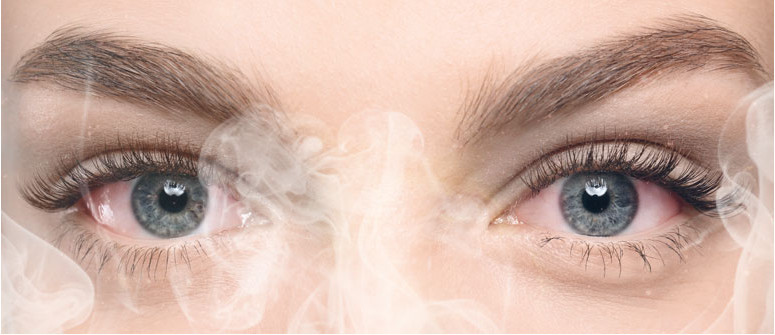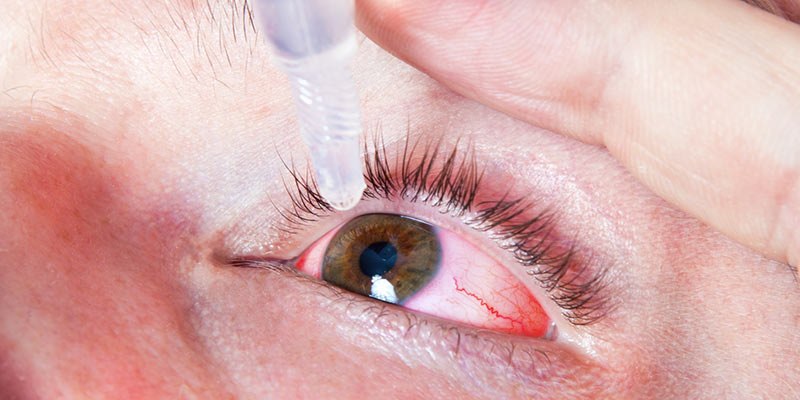Cannabis and red eyes: why is that and what can you do about it?

Bloodshot eyes are a telltale sign that someone is high. Check out this article to find out exactly what causes red eyes and what you can do about it.
There are a handful of telltale signs that someone’s been smoking weed; a desire to devour anything moving, a goofy smile, and distinct, bloodshot eyes.
But what exactly causes red eyes after smoking/vaping/eating weed? And is there something you can do about it.
WHY DOES CANNABIS CAUSE RED EYES?
There are a few reasons why cannabis causes red eye.
Some people’s are simply more sensitive to smoke, which naturally irritates the eyes already. For these people, even simply being in the same room as a smoker may cause their eyes to become red and irritated.
Another factor that may cause red eyes in some people are cannabis allergies. While this condition isn’t very common, it does exist, and like with many other allergic reactions, people with allergies who are exposed to cannabis can experience red eyes, as well as a bunch of other more-serious symptoms, including hives, swelling, and itchy skin.
However, cannabis also causes red eyes in people who don't suffer from cannabis allergies and aren’t allergic to smoke. In fact, cannabis can still cause red eyes even when vaporized or ingested.
This is due to THC, or tetrahydrocannabinol, the main active compound in cannabis.
When wen consume cannabis (either by smoking, vaping, or eating it), THC interacts with a variety of receptor cells located in our brain and body These receptors are known as CB1 and CB2 and form part of our body’s endocannabinoid system.
When introduced into our body, THC binds to these receptors and causes us to experience a wide variety of effects, most notably a psychoactive “high.”
However, another common effect of THC is to lower blood pressure, dilate blood vessels, and increase blood flow around the body.
This causes the arteries in the eye to expand, essentially giving them a red, bloodshot appearance.
The fact that cannabis can dilate blood vessels and increase blood flow in the eyes gives it a lot of promise as a treatment for glaucoma, a condition characterized by increased intraocular pressure (among others).
Studies into this field first surged in the 70s and had promising results, with cannabis indeed lowering intraocular pressure in patients. The only limitation behind using cannabis to treat glaucoma is that it is only able to lower intraocular pressure for a few hours, and glaucoma needs to be treated 24/7
HOW TO TREAT RED EYES FROM SMOKING WEED

Most cannabis users, whether recreational or medical, will want to hide symptoms of red eye.
While the legalization movement is gaining momentum and more and more people are changing their opinions about cannabis, there is still a lot of stigma surrounding cannabis and its legitimacy as a medicine.
Below are some simple ways to hide your red eyes after smoking/vaping/eating weed:
Chemical eye drops
Chemical eye drops offer fast relief from red eye symptoms and allow cannabis users to remain discreet whenever they use weed. Some common eye drop brands include Visine, Viva Drops, and more. Simply apply a few drops to each eye and you’ll be red-eye free in just a few minutes.
Artificial tear drops
Artificial tear drops are designed for regular use by patients suffering from dry eye syndrome and are usually available over the counter. Because they are designed for regular use, artificial tear drops are considered to be a little less harsh on your eyes than chemical eye drops.
Some popular brands include Clear Eyes Natural Tears, Nanotears, Systane Ultra, and TheraTears. Like regular eye drops, simply apply a few drops to each eye after using cannabis and your red-eye symptoms should be gone in a few minutes.
Wear shades




